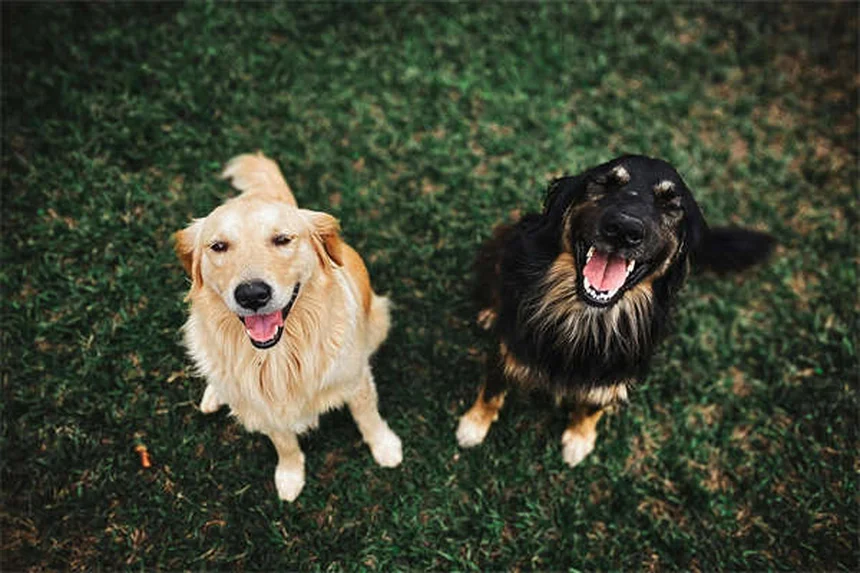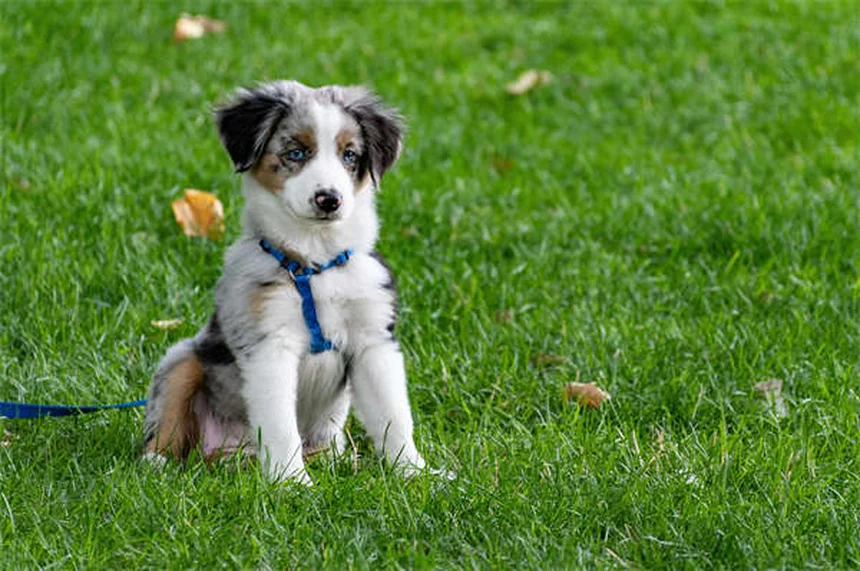Dog Years to Human Years: The Accurate Way to Calculate Your Pup's Age
How old is my dog in human years? The answer isn't as simple as multiplying by seven! We've all heard the old one dog year equals seven human years rule, but that's actually a myth. The truth is, dogs age differently depending on their size and life stage. Small breeds like Chihuahuas age slower than giant breeds like Great Danes, and puppies mature much faster than human babies.Here's the real deal: your 1-year-old pup is actually more like a 15-year-old teenager, and by age 2, they're comparable to a 24-year-old adult. After that, each year counts differently based on size - small dogs age about 4 human years per dog year, while giant breeds can age up to 8 human years in a single year! This explains why your neighbor's tiny Yorkie is still going strong at 15 while your friend's Saint Bernard might be considered elderly at 7.In this guide, we'll break down the most accurate way to calculate your dog's age in human years, explain why size matters so much, and show you how to spot the signs of aging in your furry friend. Whether you've got a playful puppy or a wise old senior, understanding their true age helps you give them the best care possible.
E.g. :Best Dog Breeds for First-Time Owners: 21 Perfect Pups for New Pet Parents
- 1、The Truth About Dog Years vs Human Years
- 2、Spotting the Signs of Aging in Your Dog
- 3、The Science Behind Dog Aging
- 4、Keeping Your Senior Dog Happy and Healthy
- 5、Fun Facts About Dog Aging
- 6、Common Questions About Dog Aging
- 7、The Surprising Similarities Between Dog and Human Aging
- 8、Busting Common Myths About Dog Aging
- 9、Creative Ways to Track Your Dog's Aging Process
- 10、How Different Breeds Experience Aging
- 11、Preparing for Your Dog's Golden Years
- 12、FAQs
The Truth About Dog Years vs Human Years
Why the "Multiply by 7" Rule Doesn't Work
You've probably heard that one dog year equals seven human years, right? Well, that's about as accurate as saying all pizza tastes the same! The truth is, dog aging isn't linear like that. Puppies develop at lightning speed compared to human babies.
Think about it this way: when your puppy turns 1, they're basically a rebellious teenager already! By age 2, they're like a young adult fresh out of college. After that, their aging slows down depending on their size. It's like they hit the fast-forward button during puppyhood, then switch to regular speed.
The Size Factor in Dog Aging
Here's something that might surprise you: small dogs actually age slower than big dogs. It's like comparing a sports car to an SUV - one's built for speed, the other for the long haul. Check out this comparison:
| Dog Size | Human Year Equivalent After Age 2 |
|---|---|
| Small (under 20 lbs) | 4 human years per dog year |
| Medium (21-50 lbs) | 4-5 human years |
| Large (51-100 lbs) | 5-6 human years |
| Giant (100+ lbs) | 7-8 human years |
Spotting the Signs of Aging in Your Dog
 Photos provided by pixabay
Photos provided by pixabay
Physical Changes to Watch For
Ever notice how your dog's muzzle is getting a little gray? That's nature's way of saying they're entering their golden years. But aging isn't just about gray hair - here's what else to look for:
Their eyes might get cloudy, but don't panic! This is usually just lenticular sclerosis, which doesn't affect vision much. However, if you notice sudden changes, it could be cataracts - time for a vet visit.
Behavioral Changes in Senior Dogs
Remember when your dog would fetch for hours? Now they might prefer napping in the sun. That's totally normal! But here's the thing: while less energy is expected, pain or discomfort isn't. If your pup stops enjoying walks or has trouble getting up, that's your cue to schedule a check-up.
Did you know dogs can lose hearing as they age? It happens gradually, so you might notice they don't come running when you open the treat bag anymore. Try stomping your feet or using hand signals if this happens.
The Science Behind Dog Aging
DNA Methylation - The Future of Age Calculation
Scientists are working on something super cool - using dog DNA to calculate biological age! It's like having a molecular clock that shows how time affects your dog's cells. This could give us way more accurate "dog years" calculations in the future.
Think about it this way: two 7-year-old dogs might look completely different - one still acts like a puppy while the other seems ancient. The DNA approach could explain why and help us give each dog the perfect care for their biological age.
 Photos provided by pixabay
Photos provided by pixabay
Physical Changes to Watch For
Isn't it weird that tiny Chihuahuas often outlive massive Great Danes? Researchers aren't 100% sure why, but here's what we know:
Big dogs grow faster as puppies, which might put more stress on their bodies. It's like comparing building a tiny house versus a mansion - one project finishes quicker with less wear and tear. Also, larger bodies mean more cells that could potentially develop problems.
Keeping Your Senior Dog Happy and Healthy
Adjusting Your Care Routine
When your dog hits their senior years (which varies by size, remember?), it's time for some lifestyle tweaks. But don't worry - this doesn't mean less fun! Just different kinds of fun.
Instead of marathon fetch sessions, try puzzle toys that challenge their mind. Swap out hard kibble for softer food if their teeth are sensitive. And those long hikes? Maybe break them into shorter, more frequent walks.
Veterinary Care for Aging Dogs
Here's a question: when was your dog's last vet check-up? If it's been more than six months, it might be time to schedule one. Senior dogs benefit from more frequent visits - think of it as routine maintenance for your favorite furry friend.
Your vet might recommend blood work to catch any issues early. They can also suggest supplements or diet changes to keep your dog feeling their best. Remember, catching problems early often means simpler (and cheaper!) solutions.
Fun Facts About Dog Aging
 Photos provided by pixabay
Photos provided by pixabay
Physical Changes to Watch For
Did you hear about the Australian cattle dog named Bluey who lived to be 29? That's over 200 in human years! While most dogs don't live that long, it shows what's possible with great care and maybe some good genes.
The oldest living dog right now is a Chihuahua mix named TobyKeith - he's 21 and still going strong! Small dogs often have this advantage, but every dog is unique.
Calculating Your Dog's Human Age
Want to know exactly how old your dog is in human years? Here's a simple method:
For the first year: 15 human years
Second year: +9 human years (total 24)
Each year after: add 4-8 years depending on size
So a 5-year-old small dog would be about 24 + (3×4) = 36 in human years. A large dog the same age would be around 24 + (3×6) = 42. See how that works?
Common Questions About Dog Aging
How Can I Tell My Dog's Exact Age?
Unless you've had your dog since puppyhood, pinpointing their exact age can be tricky. Vets use several clues:
- Teeth condition (wear, tartar buildup)
- Muscle tone and body condition
- Coat quality and graying
- Eye clarity
But here's the thing: these are just estimates. Your 8-year-old mutt might have the energy of a 5-year-old or the joints of a 10-year-old. That's why focusing on their individual needs is more important than the exact number.
What's the Best Way to Help My Dog Live Longer?
While we can't stop time, we can definitely help our dogs age gracefully. The recipe is simple but powerful:
1. Quality nutrition - feed them age-appropriate food
2. Regular exercise - adjusted for their abilities
3. Mental stimulation - keep their brain active
4. Preventive care - don't skip those vet visits
5. Lots of love - because happiness matters too!
Remember, every dog is unique. What works for your neighbor's Labrador might not be ideal for your Dachshund. The key is paying attention to your individual dog's needs as they grow older.
The Surprising Similarities Between Dog and Human Aging
Shared Health Challenges We Face
You know what's wild? Dogs develop many of the same age-related conditions we do! Arthritis, diabetes, even dementia - our furry friends experience these too. It's like we're all riding the same aging rollercoaster, just at different speeds.
Take joint pain for example. When your knees ache after that weekend softball game, your senior dog probably feels similar stiffness after playing fetch. That's why joint supplements containing glucosamine work for both species - we're more alike than we realize!
The Emotional Side of Growing Older
Ever noticed how your older dog gets more attached to routines? That's not just a canine quirk - humans do the exact same thing! We all find comfort in familiar patterns as we age.
Here's something heartwarming: senior dogs often form deeper emotional connections with their humans, just like grandparents bond with grandchildren. They might not chase balls as much, but they'll happily spend hours cuddling on the couch - and honestly, isn't that the best part of having a dog?
Busting Common Myths About Dog Aging
"Indoor Dogs Age Slower" - Fact or Fiction?
You've probably heard that indoor dogs live longer than outdoor dogs. While there's some truth to this, it's not the whole story. The real key is quality of life, not just where they sleep at night.
Outdoor dogs face more environmental stressors like extreme weather and parasites. But an indoor dog with poor nutrition and no exercise won't necessarily outlive an active outdoor dog with excellent care. It's all about finding the right balance for your pup's lifestyle!
Do Mixed Breed Dogs Really Live Longer?
Here's a question that might surprise you: Are mutts actually the healthiest dogs around? The answer is... sometimes! While hybrid vigor can give mixed breeds an advantage, well-bred purebreds from responsible breeders can be just as healthy.
The real issue comes from irresponsible breeding practices that prioritize looks over health. Whether your dog is purebred or mixed, what matters most is their individual health history and the care you provide.
Creative Ways to Track Your Dog's Aging Process
Making a Doggy Time Capsule
Why not create a fun way to document your dog's journey through life? Start a "puppy profile" when you first get them, recording things like:
- Paw print (use non-toxic paint!)
- Favorite toy at each life stage
- Height and weight measurements
- Funny habits or quirks
Looking back at these records years later will give you an amazing perspective on how much they've changed - and how some things never change, like their love for belly rubs!
The Photo Comparison Challenge
Here's a fun project: take photos of your dog in the same spot every year on their birthday. You'll create a visual timeline of their aging process that's way more meaningful than just counting years.
Notice how their face gradually gets wiser looking? How their posture changes? These subtle shifts tell the real story of your dog's journey through life. Plus, it makes for an adorable Instagram series!
How Different Breeds Experience Aging
The Tortoise and Hare of Dog Longevity
Let's play a quick game - which of these breeds typically lives longer?
| Breed | Average Lifespan | Aging Characteristics |
|---|---|---|
| Dachshund | 12-16 years | Slow to show age, often remain playful |
| Great Dane | 7-10 years | Rapid aging after 5 years |
| Poodle (Toy) | 12-15 years | Maintain cognitive function well |
| Bulldog | 8-10 years | Early onset of joint issues |
See how dramatic the differences can be? That's why understanding your specific breed's aging patterns is so important for providing the right care at the right time.
Breed-Specific Aging Quirks
Did you know some breeds have unique aging characteristics? For example, many herding dogs maintain their intelligence and work ethic well into old age, while scent hounds often keep their amazing noses even as other faculties decline.
Greyhounds are another interesting case - they're considered seniors at 5 years old but often live to 12-14! It's like they compress their middle age into just a couple years before settling into a long retirement.
Preparing for Your Dog's Golden Years
Home Modifications for Senior Comfort
As your dog ages, small changes around your house can make a big difference in their quality of life. Here are some simple but effective adjustments:
- Place rugs or yoga mats on slippery floors
- Use pet stairs or ramps for furniture access
- Raise food and water bowls to reduce neck strain
- Create cozy resting spots in multiple rooms
These modifications help your senior pup maintain independence while reducing strain on aging joints. Think of it as puppy-proofing, but for the other end of life!
The Emotional Preparation We Often Forget
Here's something we don't talk about enough: preparing ourselves for our dog's aging process. It's tough watching our energetic puppies slow down, but adjusting our expectations is crucial for their happiness - and ours.
Instead of mourning the loss of their puppy energy, celebrate the new ways they show affection and contentment. That peaceful afternoon nap together can be just as special as those wild play sessions used to be - just in a different way.
E.g. :Pet Age Calculator - Stoke Veterinary Hospital
FAQs
Q: Is the "multiply by 7" rule for dog years accurate?
A: Not at all! The "multiply by 7" method is one of those old myths that just won't die. Here's why it's wrong: dogs don't age at a steady rate throughout their lives. Puppies develop incredibly fast - that first year equals about 15 human years! Then things slow down, but how much depends on your dog's size. Small dogs might age 4 human years per dog year after age 2, while giant breeds can age up to 8 human years in a single year. We recommend using our size-based chart for the most accurate calculation.
Q: Why do small dogs live longer than big dogs?
A: This is one of nature's great mysteries, but researchers have some theories. First, larger dogs grow much faster as puppies, which might put more stress on their bodies. It's like comparing building a tiny house versus a mansion - the bigger project puts more strain on the builder. Also, bigger bodies mean more cells that could potentially develop problems. Small dogs also tend to have slower metabolisms, which some scientists think might contribute to their longer lifespans. Whatever the reason, the difference can be dramatic - a Chihuahua might live to 15-20 years while a Great Dane averages just 7-10 years.
Q: How can I tell if my dog is becoming a senior?
A: Watch for these telltale signs: graying around the muzzle (just like humans go gray), slightly cloudy eyes (usually harmless lenticular sclerosis), less enthusiasm for long walks, and maybe some stiffness after naps. But here's the important part: senior status depends more on size than actual age. Small dogs aren't considered seniors until about 9-11 years, while giant breeds enter their golden years at just 6-7. Your vet can help determine when it's time to switch to senior care based on your individual dog's condition.
Q: What's the most accurate way to calculate my dog's human age?
A: Here's our simple formula: First year = 15 human years, second year = +9 years (total 24), then add 4-8 years for each additional year depending on size. So a 5-year-old small dog would be about 36 in human years (24 + 3×4), while a large dog the same age would be around 42 (24 + 3×6). Remember, this is still just an estimate - two dogs of the same age might be biologically different depending on genetics, lifestyle, and healthcare.
Q: How can I help my dog live a longer, healthier life?
A: The recipe for canine longevity isn't complicated: 1) Quality nutrition tailored to their age and size, 2) Regular exercise (adjusted as they age), 3) Mental stimulation through training and puzzle toys, 4) Preventive vet care including dental cleanings, and 5) Lots of love and attention. Small things matter too - keeping your dog at a healthy weight, brushing their teeth regularly, and watching for early signs of arthritis can all add years to their life. Most importantly, enjoy every moment with your furry friend!







